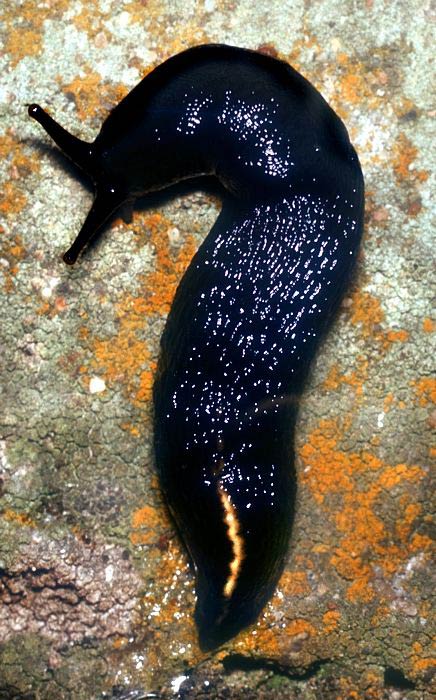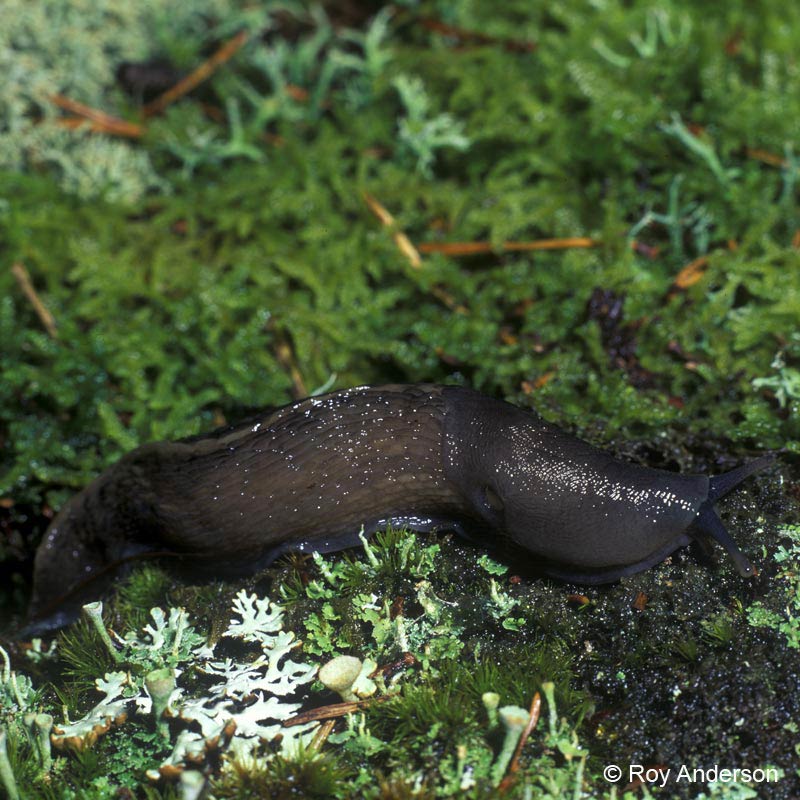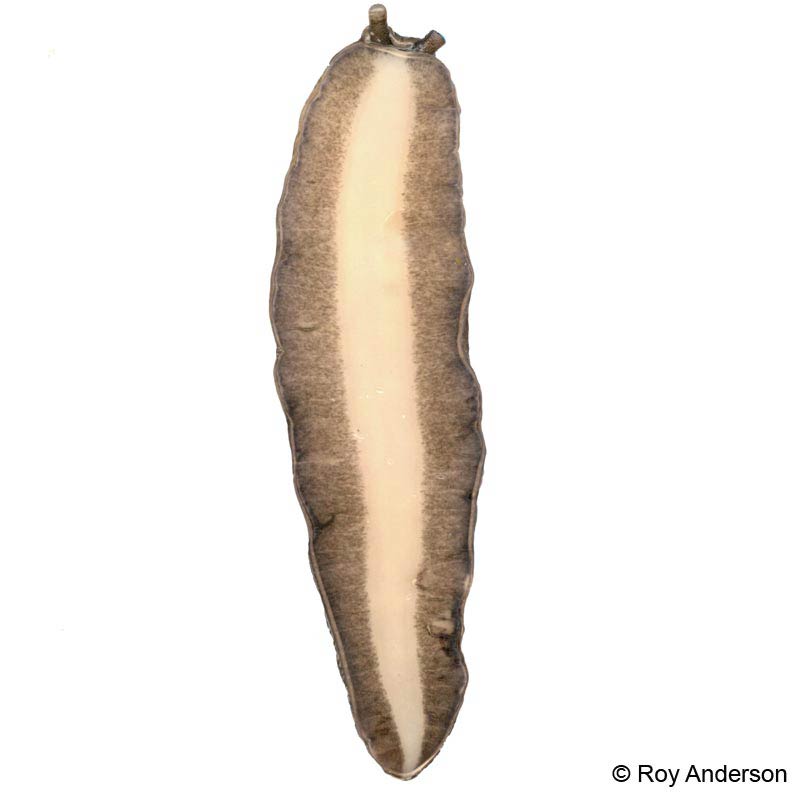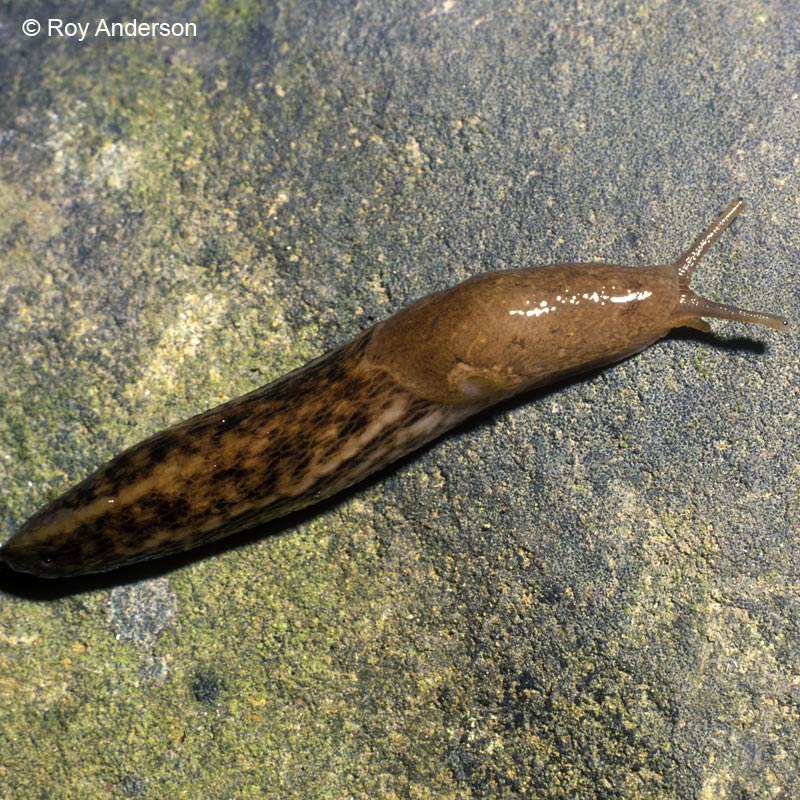Limax cinereoniger
Family
Limacidae
Species
Limax cinereoniger Wolf, 1803
Common name
Ash-grey slugSlug:
A snail that either does not possess a shell or has one that is very reduced (no definite coiling) or internal.
, Black keel-back slug
Description
This species can attain a length of 300 mm when fully mature. The color of this species is variable. It may be pale grey or light brown to jet-black, except for the tan to white stripe that runs from the posteriorPosterior:
Directional term: the rear or tail end of an animal.
edge of the mantleMantle:
A fleshy, membranous covering of the anterior portion of the body of a mollusc. It secretes the materials that form the shell.
to the tip of the tail. The pneumostomePneumostome:
This is the breathing hole on the right side of the mantle of molluscs. This allows air to pass through to the lung for gas exchange.(See also breathing pore).
(breathing pore) is located in the posteriorPosterior:
Directional term: the rear or tail end of an animal.
half of the mantleMantle:
A fleshy, membranous covering of the anterior portion of the body of a mollusc. It secretes the materials that form the shell.
. The keelKeel:
Also known as the carina. This is a longitudinal ridge that runs dorsally along the apex of the tail of the animal.
also occurs near the tip of this species.
Note: L. cinereoniger has an obvious tripartiteTripartite:
Having three distinct section/regions.
sole (the center of the footFoot:
The muscular organ on the undersurface of the body of a mollusc upon which the animal rests or uses to crawl.
is pale and the margins dark) whereas; L. maximus has a uniformly white sole. Also, a pale tan to white stripe runs down the back of L. cinereoniger, but it is absent in L. maximus. Also, juveniles of L. cinereoniger may be confused with adult L. maximus due to their uniformly colored sole.
Native range
Northern Europe and the Mediterranean region
Distribution
Europe
Ecology
This species generally comsumes algae and mushrooms and should not be considered a pest. This species occurs in woodlands and is not commonly intercepted.
Synonyms
- Limax antiquorum Ferussac, 1819 (part)
References
Anderson 2005Anderson 2005:
Anderson, R. 2005. An annotated list of the non-marine Mollusca of Britain and Ireland. Journal of Conchology 38: 607-637.; Kerney et al. 1979Kerney et al. 1979:
Kerney, M.P., R.A.D. Cameron and G. Riley. 1979. A field guide to the land snails of Britain and North-west Europe. Collins, London. pp. 288.; Quick 1960








